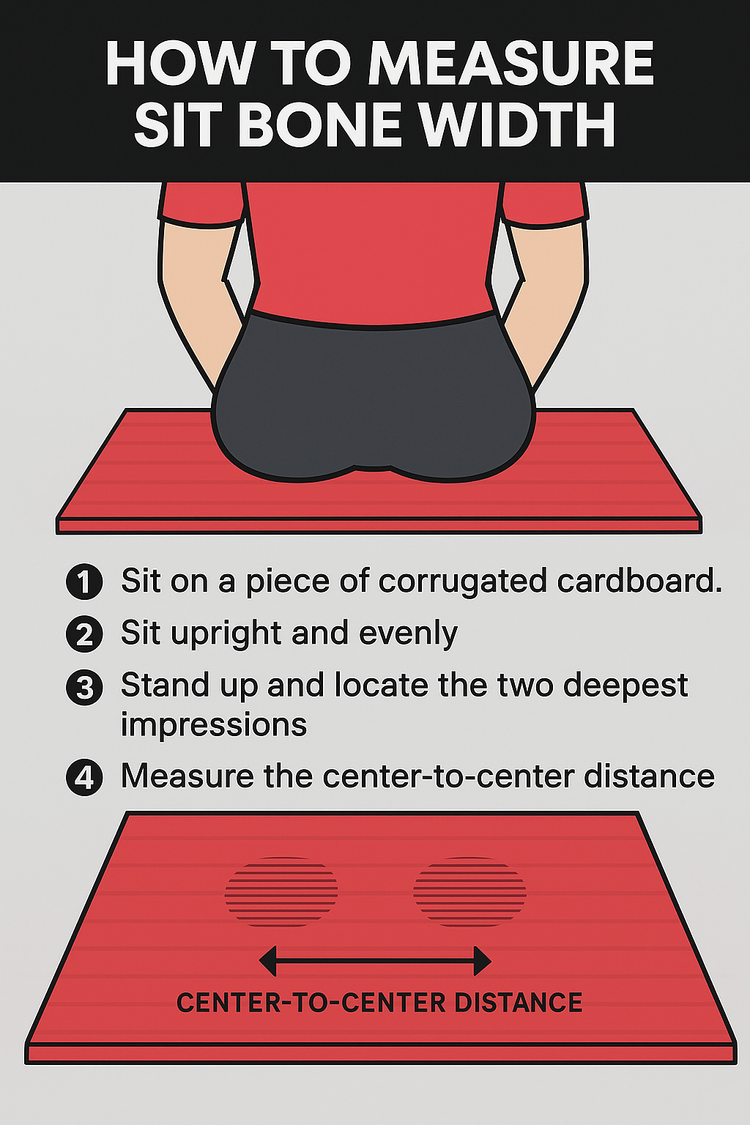Is Your Saddle Actually Comfortable, or Have You Just Accepted the Pain?
If you’ve ever told yourself saddle discomfort is “just part of riding,” it’s time for a reset.
You don’t have to suffer through numbness, chafing, or shifting in your seat for 3+ hours. In fact, doing so could be quietly limiting your power, endurance, focus, and even your recovery.
At Mach1 Performance, we believe comfort isn’t a luxury—it’s a performance advantage.
Why Saddle Comfort Is Non-Negotiable
An ill-fitting saddle isn’t just uncomfortable—it’s counterproductive.
🚩 Discomfort = Lost Power
When you’re constantly shifting to relieve pressure, you lose core stability and disrupt pedaling mechanics.
🚩 Discomfort = Delayed Recovery
Nerve compression, saddle sores, and inflamed tissues create cumulative fatigue and sideline potential progress.
🚩 Discomfort = Mental Drain
If you're thinking about your saddle more than your power output, you're leaking focus and efficiency.
“Saddle discomfort doesn’t build toughness—it steals performance.”
How to Know If Your Saddle or Fit Is Wrong
Ask yourself:
Do I feel numbness, tingling, or sharp pain in sensitive areas?
Am I constantly moving or readjusting during rides?
Do I frequently get saddle sores, chafing, or inflammation?
If yes: your body isn’t wrong—your saddle or position likely is.
Why “Breaking In” a Saddle Is a Myth
You wouldn’t run in shoes that cut your feet and hope they “break in.” Saddles are no different.
If it feels wrong from the start, it’s likely the wrong:
Width
Shape
Padding
Or angle/position
Don’t “tough it out”—tweak it or swap it.
What Actually Matters in Saddle Selection
➕ Width
Your saddle should support your sit bones—not the soft tissue in between. Width mismatch is the most common cause of numbness and pain.
➕ Shape
Flat or curved? Cutout or solid? The right shape depends on pelvic tilt, flexibility, and riding style.
➕ Padding
More isn’t always better. Over-padded saddles often cause more friction and pressure points over long rides.
➕ Position
Even the perfect saddle will cause issues if it’s tilted too far or placed wrong. Micro-adjustments in tilt, setback, and height can make all the difference.
How to Measure Your Sit Bones (At Home)
Your sit bones determine your ideal saddle width. Here’s a quick method:
Sit on a piece of corrugated cardboard placed on a hard chair.
Lean slightly forward in a cycling posture.
Stand up and locate the two deepest impressions.
Measure the center-to-center distance in millimeters.
Add 20–30mm to find your ideal saddle width.
The Takeaway: Comfort = Confidence + Performance
You should never finish a ride feeling like you just survived it because of your saddle. A well-fit saddle supports your power, protects your soft tissue, and allows you to focus on what really matters—the ride.
At Mach1 Performance, we help athletes eliminate barriers to better performance—and saddle discomfort is a fixable one. Whether it’s dialing in your position or choosing the right gear, comfort is always worth the investment.
👉 Want help with fit, gear selection, or dialing in your position? Let’s talk.

